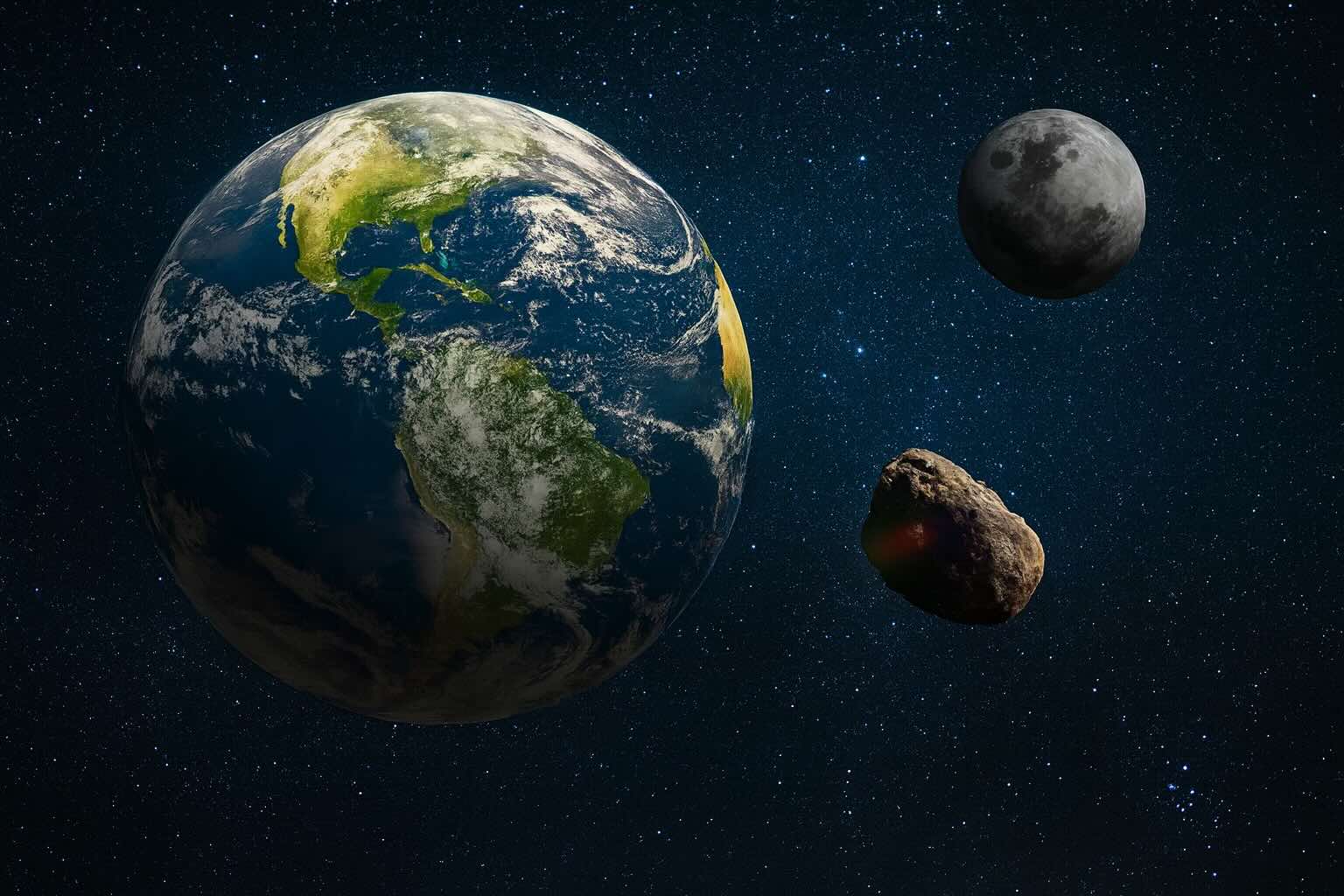For most of history, we believed Earth had just one moon. Now, astronomers have confirmed that our planet has captured a second, much smaller companion. This new “mini-moon,” officially named asteroid 2024 PT5, was pulled into Earth’s orbit on September 29, 2024.
The discovery has thrilled scientists and sparked curiosity among space enthusiasts. While this moon won’t stay forever, it offers rare insights into how near-Earth asteroids behave—and what they can teach us about our solar system.
How Earth Gained a Second Moon
The event was first spotted by astronomers at the Complutense University of Madrid, who used a telescope in Sutherland, South Africa. They noticed a tiny asteroid, just 37 feet across, temporarily trapped by Earth’s gravity.
Richard Binzel, an MIT astronomer, explains:
“These mini-moons happen more often than we think, but most are too small to detect. Only recently have our surveys become powerful enough to spot them.”
While our main moon measures more than 2,000 miles wide, asteroid 2024 PT5 is minuscule in comparison. To illustrate:
-
Earth’s moon: 2,159 miles wide
-
Asteroid 2024 PT5: 37 feet wide
-
Size difference: Our moon is about 300,000 times wider
Though small, its capture is a big deal for science.
Where Did This Mini-Moon Come From?
Asteroid 2024 PT5 is part of the Arjuna group, a collection of asteroids that orbit the Sun at nearly the same distance as Earth. These space rocks often pass relatively close to us—sometimes just a few million miles away.
On September 29, Earth’s gravity caught 2024 PT5, pulling it into a temporary orbit. But unlike our permanent moon, this asteroid is only visiting. NASA’s Jet Propulsion Laboratory predicts it will leave by November 25, 2024.
Carlos de la Fuente Marcos, a mini-moon expert, describes it like this:
“A true moon is like a customer who goes inside a store. Mini-moons are more like window shoppers—they pause briefly but don’t stay.”
Why Mini-Moons Matter
At first glance, a rock just 37 feet wide may not seem important. But astronomers see these captures as golden opportunities. Mini-moons act as natural laboratories that help researchers:
-
Study asteroid composition and surface properties
-
Refine models of near-Earth object behavior
-
Test spacecraft navigation techniques for future missions
-
Improve predictions of potential asteroid collisions
Binzel explains that these events are rare chances to learn:
“Temporary captures let us study small bodies up close. They help us prepare for future missions and understand the risks and opportunities near-Earth asteroids present.”
How Can We See It?
For the average stargazer, spotting 2024 PT5 won’t be possible. The asteroid is too faint for backyard telescopes. Detecting it requires professional-grade equipment:
-
A telescope with at least 30 inches in diameter
-
Advanced imaging detectors such as CCD or CMOS cameras
Even with the right gear, astronomers must track it carefully before it slips back into space.
The Short Life of Earth’s Second Moon
Unlike our main moon, which has circled Earth for billions of years, asteroid 2024 PT5 will only stay for about two months.
Its capture began at 3:54 p.m. EDT on September 29, 2024, and will end at 11:43 a.m. EDT on November 25, 2024. After that, it will continue its orbit around the Sun, leaving Earth with just its familiar, permanent moon.
This fleeting visit reminds us of how dynamic and unpredictable the solar system can be.
Lessons for the Future
Mini-moons may be temporary, but they have lasting importance. Scientists hope that one day we might:
-
Send missions to capture samples from these small bodies
-
Test spacecraft systems on short-term targets before heading deeper into space
-
Use mini-moons as training grounds for asteroid mining or planetary defense projects
Every capture adds to our knowledge of asteroid dynamics, which helps us better prepare for potential threats. Understanding how these rocks move and interact with Earth’s gravity could one day prove vital in deflecting hazardous asteroids.
A Reminder of the Universe’s Surprises
The discovery of Earth’s second moon has captured imaginations worldwide. It shows that even in 2024, with powerful telescopes scanning the skies, the universe can still surprise us.
While asteroid 2024 PT5 will soon move on, its brief visit underscores how much we still have to learn. Each new discovery brings us closer to understanding the mysteries of our cosmic neighborhood.
As technology improves, astronomers expect to find more mini-moons like this one. And who knows—maybe one of them will stay a little longer, giving us even more time to study and explore.
Earth’s second moon, asteroid 2024 PT5, may be small and temporary, but its discovery is monumental. It highlights the progress of modern astronomy, the importance of tracking near-Earth objects, and the endless surprises of the cosmos.
In just two months, our planet will return to having one moon. But the lessons learned from this brief visitor could last a lifetime—and might even shape the future of space exploration.
